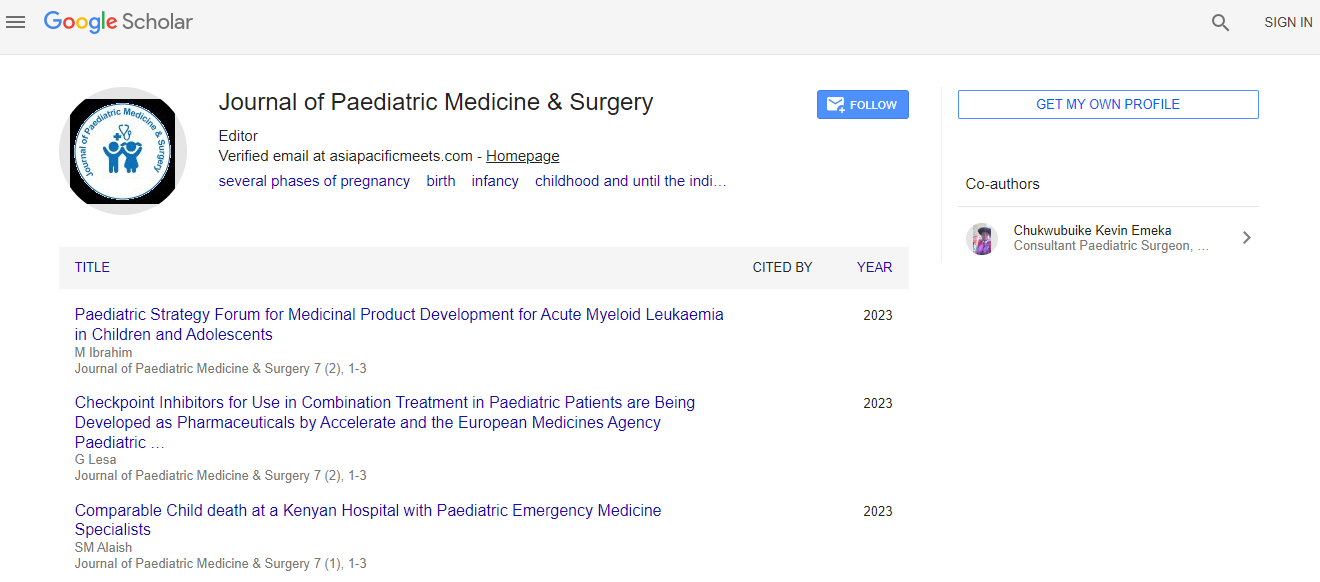Pediatrics Conference 2018: Diagnosis of tuberculosis in children: challenges and opportunities - Joseph L Mathew - Postgraduate Institute of Medical Education and Research
*Corresponding Author:
Copyright: © 2019 . This is an open-access article distributed under the terms of the Creative Commons Attribution License, which permits unrestricted use, distribution, and reproduction in any medium, provided the original author and source are credited.
Abstract
Childhood tuberculosis is an important public health problem in resource constrained settings, but continues to be neglected by physicians and policy makers. Childhood tuberculosis is a hidden epidemic. Also, since from many years TB control programs have not spent much attentive to the unseen world of pediatric TB and have been attentive on grown-ups with sputum microscopy smear-positive pulmonary disease, because these are the main reasons for spreading TB easily. Furthermore, gaps in recording paediatric TB cases from private and public health sectors, and weak national age specific surveillance systems in many settings, have donated to maintain uncertainty about the childhood TB burden. Moreover, performing an exact diagnosis is challenging, as the disease in children is basically paucibacillary, the sputum is seldom formed, mainly by young children, specimens are hard to obtain, and diagnostic tools have limited sensitivity. Molecular technology can support to improve TB diagnostic in the paediatric population, and recent studies says that it when compared to microscopy, increasing of two-folds the diagnosis of bacteriologically confirmed TB. Due to delayed and limited suspicion of TB, it hard to maintain TB in children and it’s like challenging.
Most of cases diagnosis is clinical, and only in rare cases bacteriologically confirmed. The history of contact with a grownup with lively disease is a beneficial, Well-characterized symptoms and information to support the diagnosis may help for the accuracy diagnostic in adult children, whereas they may be low specific in very young children. However, rapid tests such as the GeneXpert MTB/RIF, which are extensively available from the past few years, has been changed the diagnostic landscape of TB. And, this test is much higher than microscopy, so sensitivity, in a short time requested (i.e., in couple of hours), and mostly there is no essential of sophisticated laboratory infrastructure, when compared to culture. Also, Tuberculosis (TB) has been a disease affecting almost all over the world. Lots of efforts came in the past in order to improving diagnosis and treatment. Diagnosis is particularly challenging in infants and children for many reasons. Children generally do not produce or expectorate sputum, making it difficult to obtain appropriate samples for analysis. Families generally do not collect and transport respiratory specimens properly.
The disease is basically mycobacteria and paucibacillary are shed intermittently, dropping the yield (compared to adults). The hallmark radiological signs (such as pulmonary cavity) are rarely seen in childhood tuberculosis. And, furthermore physicians frequently treat kids without confirming the diagnosis. The twin burdens of HIV infection and rising resistance among mycobacteria add further challenges to diagnosis. The mainstay of tuberculosis diagnosis rests on demonstration of acid fast bacilli (AFB) in biological samples (induced sputum, gastric aspirate/lavage, nasopharyngeal aspirate, lymph node aspirate, etc.). Whatever staining with conventional process yields results is only about 30% for confirmed cases. Mycobacterial culture yield is also extremely low, but is somewhat improved by using liquid culture media. Clinical scoring systems have poor sensitivity and specificity; with limited diagnostic validity for treatment decisions. Radiological diagnosis rests on demonstration of one of three signs viz. hilar/Paratracheal lymphadenopathy, military shadows and a fibrocavitary lesion, but these findings are rare. Tuberculin test and serological assays are two frequently misused tests. The former cannot distinguish infection from disease (hence has limited value in endemic settings) and the latter is unreliable and is discouraged by national and international guidelines. Even interferon gamma release assays (IGRA) have no value in endemic settings. Current molecular diagnostic tests have increased the hopes of better diagnostic platforms. The Xpert MTB RIF system (GeneXpert) is the most promising among these. A series of systematic reviews shows that GeneXpert is superior to microscopy, but inferior to culture (sensitivity ~60%, specificity >95%). This is a setback because although a positive test result is helpful to start treatment, a negative test does not rule out tuberculosis. Further, GeneXpert sensitivity is considerably lower in smear microscopy negative cases (compared to smear positive cases). However, a significant advantage is the rapid identification of rifampicin resistance. Another diagnostic method is undergoing evaluation in children include: loop-mediated isothermal amplification (LAMP), and LED microscopy. However, children are excluded from the majority of global research studies on newer diagnostic platforms. Finally, diagnosis of childhood tuberculosis is more difficult, and needs considerable effort and time. A step-wise approach can increase diagnostic confirmation in this difficult public health problem.

 Spanish
Spanish  Chinese
Chinese  Russian
Russian  German
German  French
French  Japanese
Japanese  Portuguese
Portuguese  Hindi
Hindi 